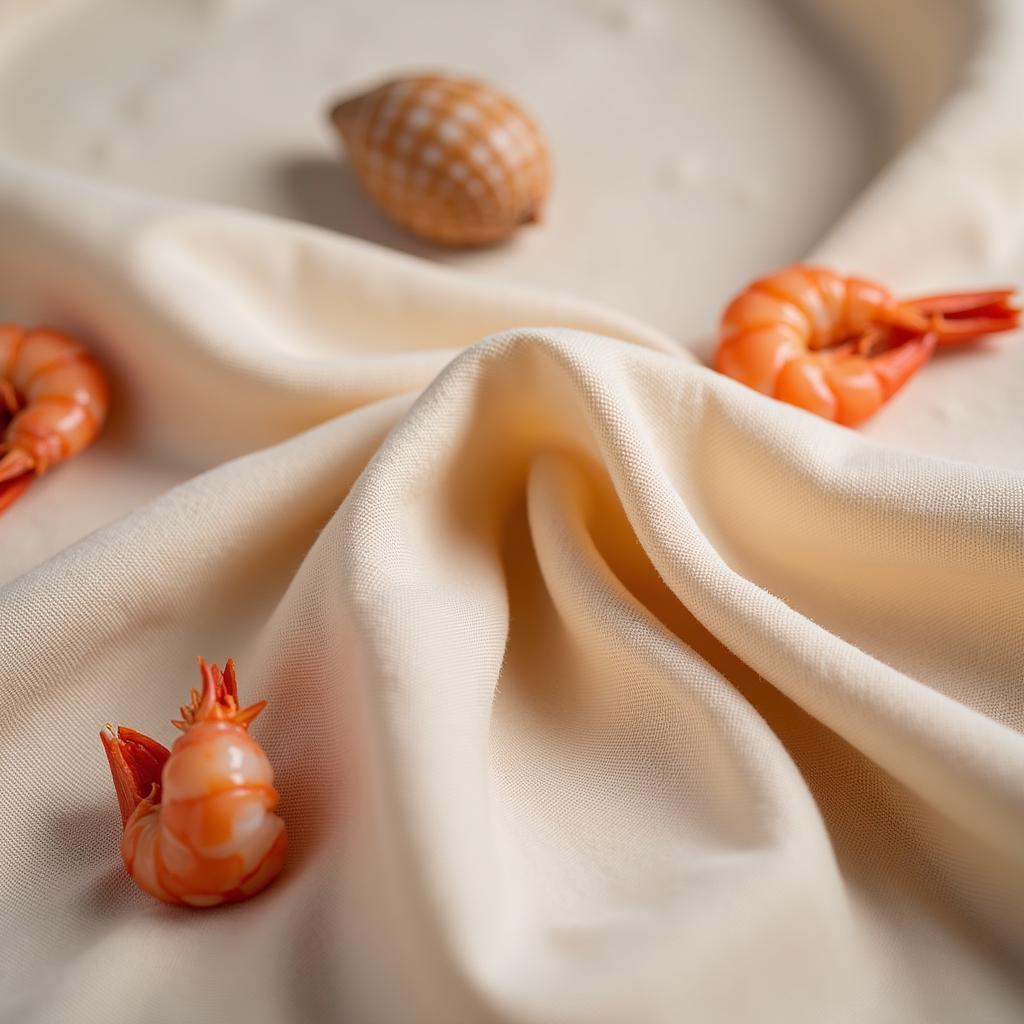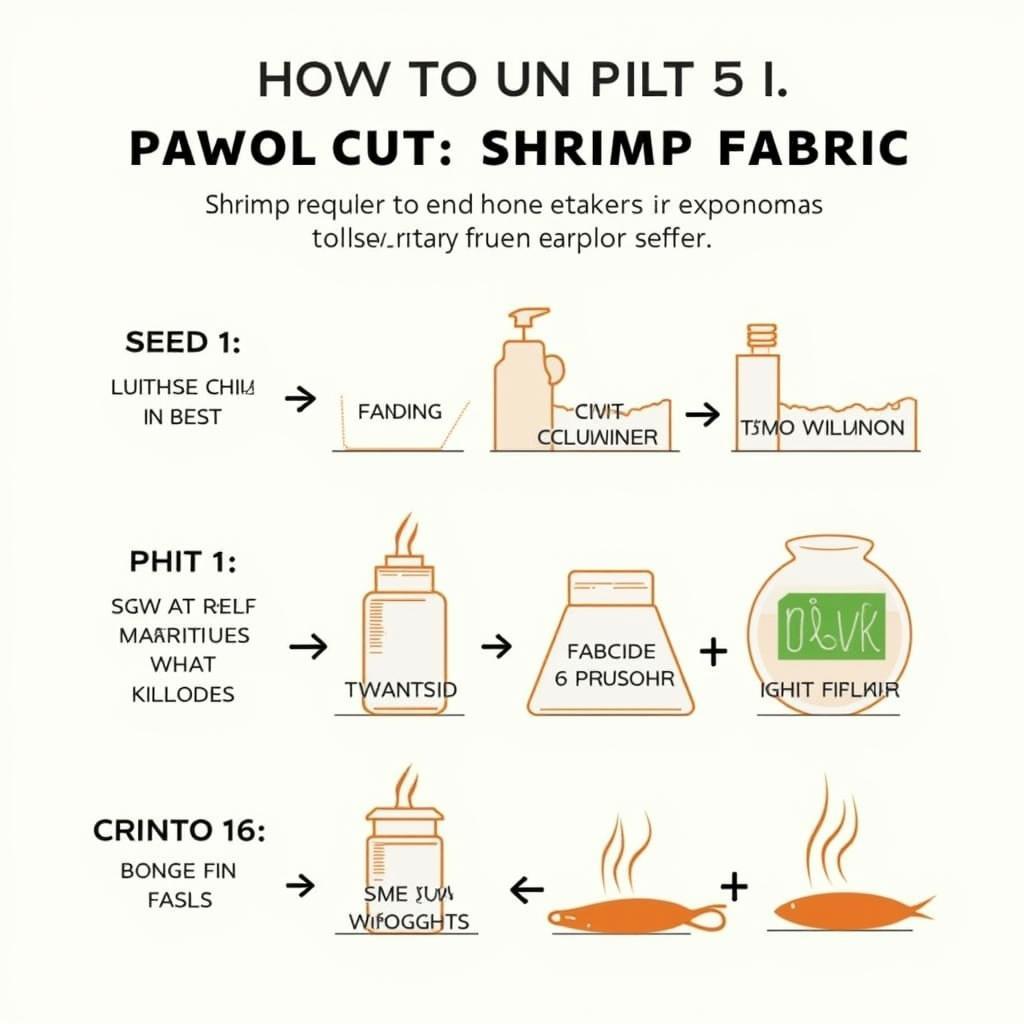Shrimp Fabric. This innovative material is making waves in the textile industry, offering a unique blend of sustainability, durability, and style. From its origins to its diverse applications, we’ll delve into everything you need to know about shrimp fabric.
What is Shrimp Fabric? Chitosan Fabric Explained
Shrimp fabric, also known as chitosan fabric, isn’t made directly from shrimps themselves. Instead, it’s derived from chitin, a natural biopolymer found in the exoskeletons of crustaceans like shrimps, crabs, and lobsters. This chitin is processed to create chitosan, a versatile material used in various industries, including textiles. The resulting fabric is surprisingly soft, breathable, and possesses inherent antibacterial properties. This makes shrimp fabric a compelling alternative to traditional textiles, especially for those seeking eco-conscious and hypoallergenic options.
 Chitosan fabric from shrimp shells
Chitosan fabric from shrimp shells
The Benefits of Choosing Shrimp Fabric
The advantages of shrimp fabric extend beyond its unique origin. This sustainable material offers a plethora of benefits:
- Eco-Friendly: By utilizing a byproduct of the seafood industry, shrimp fabric production reduces waste and promotes a circular economy.
- Biodegradable: Unlike synthetic fabrics, shrimp fabric breaks down naturally, minimizing its environmental impact.
- Antibacterial and Hypoallergenic: Chitosan’s natural properties make it resistant to bacteria and dust mites, making it ideal for sensitive skin.
- Breathable and Moisture-Wicking: The fabric’s structure allows for excellent air circulation and moisture management, keeping you comfortable.
- Durable and Strong: Despite its softness, shrimp fabric is surprisingly resilient and can withstand regular wear and tear.
Diverse Applications of Shrimp Fabric
From fashion to medical applications, shrimp fabric’s versatility is truly remarkable. Here are some of its most common uses:
- Apparel: Shrimp fabric is increasingly used in clothing, from everyday wear to high-fashion garments, offering a sustainable and stylish choice.
- Medical Textiles: Its antibacterial properties make it suitable for wound dressings, bandages, and other medical applications.
- Home Furnishings: Shrimp fabric can be used in bedding, upholstery, and other home textiles, creating a healthier and more comfortable living environment.
- Industrial Applications: The fabric’s strength and durability make it suitable for various industrial uses, including filtration systems and protective gear.
 Applications of chitosan fabric
Applications of chitosan fabric
Shrimp Fabric: A Sustainable Solution for the Future
As the fashion industry seeks more sustainable practices, shrimp fabric emerges as a promising alternative. Its eco-friendly production, combined with its unique properties, makes it an attractive option for both consumers and manufacturers. By choosing shrimp fabric, we can contribute to a more sustainable and responsible future for the textile industry.
How is Shrimp Fabric Made?
The process of creating shrimp fabric from shrimp shells involves several key steps:
- Chitin Extraction: The shells are collected and processed to extract chitin.
- Deacetylation: The chitin is then chemically treated to remove acetyl groups, converting it into chitosan.
- Fiber Formation: The chitosan is dissolved and spun into fibers.
- Fabric Production: These fibers are then woven or knitted into the final shrimp fabric.
 Chitosan fabric production process
Chitosan fabric production process
Conclusion
Shrimp fabric, with its sustainable origins and exceptional properties, is revolutionizing the textile industry. From its eco-friendly production to its diverse applications, shrimp fabric offers a compelling alternative to traditional materials. By embracing this innovative fabric, we can contribute to a more sustainable and responsible future for fashion and beyond.
FAQ
- Is shrimp fabric expensive?
- How do I care for shrimp fabric?
- Where can I buy shrimp fabric?
- Is shrimp fabric truly hypoallergenic?
- What are the limitations of shrimp fabric?
- Is shrimp fabric vegan?
- What is the lifespan of shrimp fabric products?
Khi cần hỗ trợ hãy liên hệ Số Điện Thoại: 0909802228, Email: doibongda@gmail.com Hoặc đến địa chỉ: 101 Đ. Lý Chiêu Hoàng, Phường 10, Quận 6, Hồ Chí Minh, Việt Nam. Chúng tôi có đội ngũ chăm sóc khách hàng 24/7.